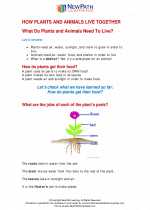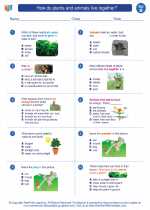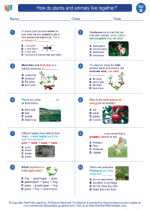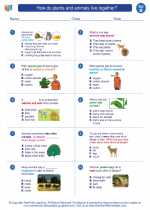How do plants and animals live together?
Plants and animals have a close relationship in the natural world. This relationship, known as symbiosis, is essential for the survival of both plants and animals. There are several ways in which plants and animals live together and depend on each other for various needs.
Pollination
One of the most important ways plants and animals live together is through pollination. Pollination is the process by which pollen is transferred from the male reproductive organs to the female reproductive organs of a plant, allowing for the production of seeds and fruits. This process is often carried out by animals such as bees, butterflies, birds, and bats, which help in the transfer of pollen from one flower to another as they feed on nectar or pollen.
Seed Dispersal
Plants rely on animals for the dispersal of their seeds. Many plants have evolved mechanisms to entice animals to eat their fruits, which contain seeds. The seeds pass through the animal's digestive system and are deposited in a different location, aiding in the dispersal and germination of new plants.
Shelter and Habitat
Plants provide shelter and habitat for a wide variety of animals. Trees, for example, provide nesting sites for birds and homes for insects. In return, animals help in the spreading of seeds and contribute to the overall health of the plant community through activities such as soil aeration and nutrient cycling.
Food Source
Plants are the primary source of food for many animals. Herbivores feed on plants for their energy and nutrient needs, while carnivores rely on herbivores for sustenance. This interconnected food web demonstrates how plants and animals are dependent on each other for survival.
Study Guide
- Define the term "symbiosis" and provide examples of symbiotic relationships between plants and animals.
- Explain the process of pollination and the role of animals in this essential plant reproductive process.
- Discuss the different methods of seed dispersal and the ways in which animals aid in this process.
- Describe how plants provide shelter and habitat for animals and the benefits that animals bring to the plant community.
- Illustrate the interconnectedness of the food web, highlighting the dependence of animals on plants for food and energy.
Understanding the intricate relationship between plants and animals is crucial for appreciating the delicate balance of ecosystems and the importance of conservation efforts to protect these vital interactions.
.◂Science Worksheets and Study Guides Second Grade. How do plants and animals live together?

 Worksheet/Answer key
Worksheet/Answer key
 Worksheet/Answer key
Worksheet/Answer key
 Worksheet/Answer key
Worksheet/Answer key
